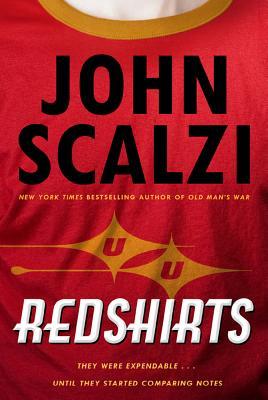Listen. The Sanctuary of the Redeemers on Shotover Scarp is named after a damned lie for there is no redemption that goes on there and less sanctuary
 Title: The Left Hand of God
Title: The Left Hand of God
Series: The Left Hand of God
Author: Paul Hoffman
Genre:Fantasy, Young Adult, Dystopia Dark Fantasy
Publisher: Michael Joseph
Publishing date: January 7, 2010
ISBN: 9780718155186
Synopsis: “The Left Hand of God” takes place in the desolate Sanctuary of the Redeemers, where young boys endure the brutal regime of the Lord Redeemers. Among them is Thomas Cale, a mysterious and resilient teenager who witnesses a horrifying act that compels him to escape or face death. His only chance for survival lies in reaching the corrupt city of Memphis, but the Redeemers are determined to retrieve him, not just for what he knows, but for a far more terrifying secret he is unaware of.
My Review:
“The Left Hand of God” by Paul Hoffman is a novel set in a desolate world. The story revolves around a boy named Thomas Cale. He has spent most of his life enduring the brutal regime of the Lord Redeemers in a place called Sanctuary. The Lord Redeemers aim to serve the One True Faith. They mould young boys into religious soldiers through cruelty and violence, keeping them at Sanctuary as acolytes.
Cale, a mysterious and multifaceted character, witnesses a horrifying act that forces him to escape the Sanctuary or face certain death. His only hope lies in reaching the corrupt city of Memphis, which stands in stark contrast to the Sanctuary with its godlessness and beauty. However, the Redeemers are determined to bring Cale back at any cost, not just because of the secret he now knows, but because of an even more terrifying secret he is unaware of.
The novel is set in a pre-industrial world where various nations, including the Roman-like Materazzi, the fanatical Redeemers, and their eternal adversaries, the Antagonists, exist. The conflict between the Redeemers and Antagonists serves as a central focus of the book. But sometimes it seems like the story forget this. The Redeemers use a cruel training system that involves kidnapping or buying small children and subjecting them to indoctrination in order to create religious soldiers.
The treatment of the young boys, despite the high death rate, makes the story unbelievable. Part of the training is 10 – 16 hours of physical training, as well as underfeeding. Yet somehow the boys grow impressive muscles and can walk 80 miles a day for several days with little to no food.
The time period of the book is difficult to determine. In the story you find references to for example Norway, which was united as a kingdom in 800s. The book describes Norwegians as violent seafarers aka. Vikings. But then a few chapters later the Materazzi seems baffled at the description of a ballista or catapult. These were in use 400 BCE while the Viking age started around 700 CE. The setting could be a future, post-apocalyptic Earth. In this case the civilization has regressed to a pre-industrial society. It seems like the story takes place in the United States, because most of it takes place in Memphis. Which brings another conundrum regarding the references to Vikings. The mishmash of historical and fantastical elements makes it challenging to pinpoint the exact time and location.
The narrator of the book is witty and engaging, providing insightful tangents that expand the world and plot. But the novel suffers from poor coherence and a confusing plot. It attempts to blend too many genres and lacks a clear identity, alternating between YA coming-of-age and adult themes without mastering either. The multiple viewpoints makes the story difficult to follow because of the clumsy transitions.
“The Left Hand of God” falls short in terms of character development and believability. The characters’ emotions and decisions often feel flat and unreasonable. There is a lack of suspense which leaves the reader feeling detached and uninterested. Although the novel has its occasional bright moments, they are not enough to maintain engagement.
While the premise of “The Left Hand of God” is intriguing but flawed in execution. Paul Hoffman’s mishmash of fact and history with poorly integrated fantasy elements detracts from the overall quality of the story. With a confusing plot, underdeveloped characters, and a lack of suspense, the novel fails to captivate readers effectively.
About the author:
Paul Hoffman, a unique novelist, had an unconventional upbringing, spending his childhood witnessing his father’s parachuting adventures. He faced challenges with the educational system but eventually studied English at New College, Oxford. Hoffman held various jobs, including film censor, and his first novel, “The Wisdom of Crocodiles,” took thirteen years to write, accurately foreseeing events like international terrorism and the financial system collapse. He has also worked as a screenwriter, collaborating with renowned filmmakers such as Francis Ford Coppola.

 Title: From Beyond
Title: From Beyond Title: City of Bones
Title: City of Bones Title: Coraline
Title: Coraline Title: Lock In
Title: Lock In Title: Paradox Bound
Title: Paradox Bound Peter Clines, born in Cape Neddick, Maine is an American author and novelist best known for his zombies-vs-superheroes series, Ex-Heroes, and Lovecraftian-inspired Threshold novels 14 and The Fold. While Clines worked as a props master, his writing turned from prose to focus on scripts. In 2006, after the end of a film project, he dedicated himself to writing full-time. He worked for Creative Screenwriting Magazine, writing interviews, reviews, and articles. Clines made his first fiction sale, The Hatbox, to online journal The Harrow.
Peter Clines, born in Cape Neddick, Maine is an American author and novelist best known for his zombies-vs-superheroes series, Ex-Heroes, and Lovecraftian-inspired Threshold novels 14 and The Fold. While Clines worked as a props master, his writing turned from prose to focus on scripts. In 2006, after the end of a film project, he dedicated himself to writing full-time. He worked for Creative Screenwriting Magazine, writing interviews, reviews, and articles. Clines made his first fiction sale, The Hatbox, to online journal The Harrow. Title: Aurora
Title: Aurora Title: Redshirts
Title: Redshirts John Michael Scalzi II is an American science fiction author and former president of the Science Fiction and Fantasy Writers of America. He is best known for his Old Man’s War series, three novels of which have been nominated for the Hugo Award, and for his blog Whatever, where he has written on a number of topics since 1998. Lock In is a science fiction police procedural novel.
John Michael Scalzi II is an American science fiction author and former president of the Science Fiction and Fantasy Writers of America. He is best known for his Old Man’s War series, three novels of which have been nominated for the Hugo Award, and for his blog Whatever, where he has written on a number of topics since 1998. Lock In is a science fiction police procedural novel. Title: We Are Legion – We Are Bob
Title: We Are Legion – We Are Bob Title: How to Stop Time
Title: How to Stop Time Matt Haig is a British novelist and journalist. He has written both fiction and non-fiction for children and adults, often in the speculative fiction genre. Haig is the author of both fiction and non-fiction for children and adults. His novels are often dark and quirky takes on family life.
Matt Haig is a British novelist and journalist. He has written both fiction and non-fiction for children and adults, often in the speculative fiction genre. Haig is the author of both fiction and non-fiction for children and adults. His novels are often dark and quirky takes on family life.


